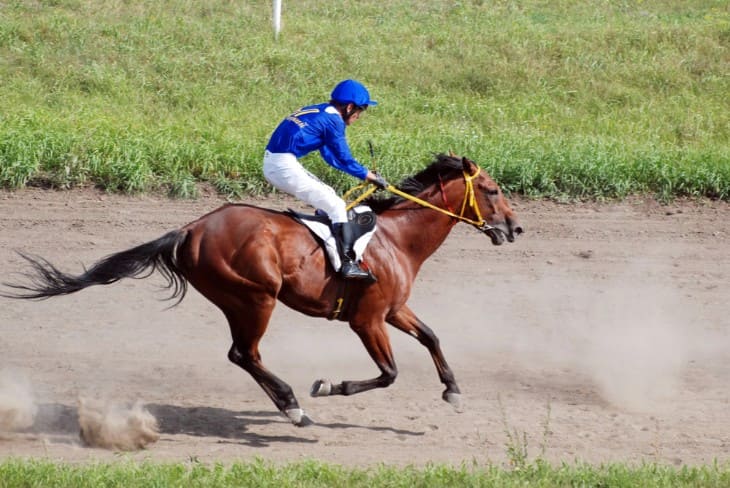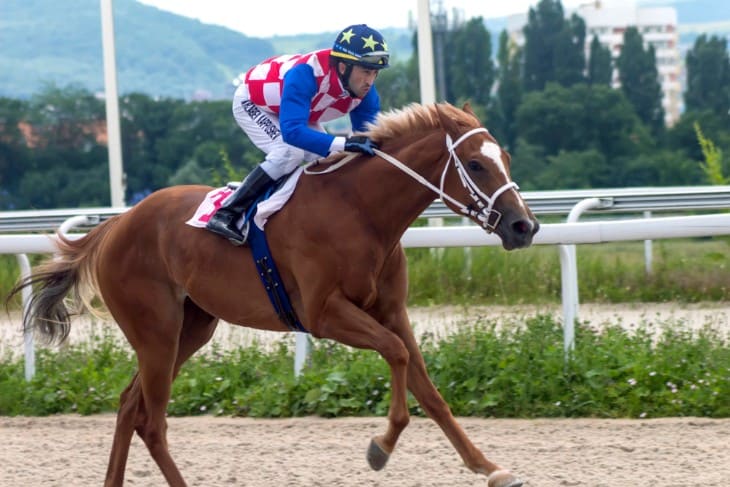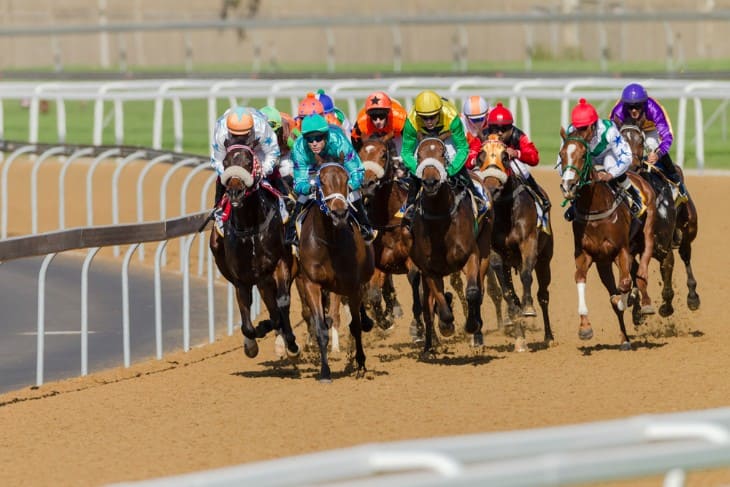- Understanding Weather’s Influence on Horse Racing Dynamics
- Rain’s Influence: A Test of Skill and Strategy
- The Role of Sunshine and Drier Conditions
- Wind Factors: An Underestimated Element in Racing
- Challenge Posed by Changing Weather Conditions during the Festival
- Pre-Race Strategies Altered by Weather Forecasts
- In-Race Adaptability to Sudden Weather Changes
- In Summary,
Cheltenham Horse Racing Festival is a huge occasion in British horse racing featuring competitive races and weather challenges. This paper intends to discuss how different types of weather influence the outcomes and general experience of Cheltenham Racing.
Every time it rains, tracks become more difficult or clearer, sunny days make them faster, meaning that any weather conditions play a significant role in the festival.
Understanding Weather’s Influence on Horse Racing Dynamics
Weather is key in horse racing, especially during events like Cheltenham Horse Racing Festival. Let us look at how various kinds of weather influence races.
To begin with, the condition of the track changes depending on the weather. When it rains, the track softens and becomes muddy. It can slow down horses that prefer dry and hard ground. However, some run better on soft ground because they find gripping easier as well as running through mud. In this way, rain can change who will be expected to do well in a race.
On sunny days when there is no rain for hours together, tracks dry up and harden. This is good news for dry-land-loving horses that like running on firm soil surfaces; they can go faster while keeping their pace constant. Conversely, this may be difficult for those trained to compete on softer grounds since they may not have enough thrusting power needed to get enough speed for fast running.
Wind also matters; it can favour or retard the horses' progress. If there is a strong wind blowing from behind them then they will go much faster while racing but if it blows against them, their speed would fall off automatically thus reducing their pace to below the average rate set by an aerodynamically indifferent horseman; hence jockeys should bear this fact in mind when planning tactics for their races.
The temperature affects horses too! One cannot deny that some Suffolk Punches give up quite easily under the scorching sun while others handle it with relative ease. On colder days, muscles can become stiff and horses may need more time to warm up before the race.
Weather affects horse racing in many ways. How fast they run, how well they hold on to the track and their energy levels are all changed by weather. This makes races at Cheltenham exciting because you never know who will win. It is not just about which horse is quickest; it also depends on which one suits the conditions on race day.
Rain’s Influence: A Test of Skill and Strategy
If you look closely, rain has a great effect on horse racing, especially during the Cheltenham Racing Festival. Let us consider how this change is for jockeys and horses when it rains.
The first noticeable difference after it rains is what becomes of the track. The ground gets softer and wetter when rain falls. For some horses though, this means good news since they are usually better at running on soft surfaces than others in races like that of this day where it was raining throughout. Other hooves sink into the ground less easily hence less slipping occurs as they keep a steady pace without any skidding due to softening grounds as such horses have more chances of winning in wet conditions.
For other horses (that) cannot be said about them since every droplet hitting their skins makes racing even harder for them if these animals are used to dry firm grassy fields then obviously slippery tracks will always be an issue with them when contests are held under such wet conditions as these herein.
They may find it difficult to go faster; their hooves will sink deep into the mud thus making it difficult for them to push back while running fast enough as required by heavy tracks that have become moistened owing to persisting downpour leaving tiny footprints indicating "We tried" but did not succeed fully or partially either necessitating increased efforts from these animals' side whenever competing amid showers whereas riders face the daunting task of urging them onward.
Riders should consider their strategy when it is raining. Starting the race slowly and saving energy for a strong finish could be an alternative; or, they might try to get as close as possible to the other horses while using them like a guide over the slippery track. The rain makes jockeys more alert and ready to change their plan if needed.
The rain, however, affects visibility because it makes it almost impossible for jockeys to see in heavy showers. They are supposed to be cautious in order not to cause accidents at all costs. Also, they must keep an eye on their horse ensuring that it is not getting stressed out or too tired too quickly.
Rain at Cheltenham Racing is a test of skill and strategy. It feels different on the track and changes how horses run on it. Jockeys need to adapt their plans and be ready for a more challenging race. Rain adds an extra layer of excitement to the races, making them unpredictable and thrilling to watch.

The Role of Sunshine and Drier Conditions
At this point, sunshine gets into the picture: suddenly, Cheltenham Racing becomes appealingly challenging again! This is how these conditions will affect racing events:
- Faster Track Conditions: With sunlight shining upon the track drying it up so much faster than ever before, which makes it hard underfoot thereby causing the runners over various obstacles covered with turf such as fences or hurdles; especially when jumping around corners since such places usually develop into slushier spots prone even during wet seasons.
- Impact on Horse Performance: Some horses are better in warm dry weather. They can save more energy and run more efficiently. Conversely, horses that prefer a softer ground may find it difficult. To maintain their speed, they need to work harder, which is fatiguing. Therefore, jockeys who ride such horses must find a balance between speed and conservation of energy.
- Improved Visibility and Morale: Sunshine also makes the track visible for jockeys navigating it. Besides lifting the spirits of everyone present at the festival. When feeling performance-oriented under a clear sky in Cheltenham, there is an exhilarating capacity within people watching those competitions who may be tired or re-engeticised again depending on what type of day this turns out as at times we're having fun.
Wind Factors: An Underestimated Element in Racing
The wind is rarely considered to be a factor in horse racing, but it can make or break a race at the Cheltenham Racing Festival. So, here we show how different types of wind may influence races:
- Effect of Headwinds and Tailwinds: A strong headwind can slow down the race. They have to use more energy while facing it. This means that they burn out quickly. In such conditions jockeys have to choose wisely on how to use their horses' energy though in general; however, when there is a tailwind things change as well by giving an extra boost towards direction moving forward. Consequently, this leads to faster races with exciting finishes unlike otherwise would be an exciting finish
- The Wind’s Impact on Strategy: Jockeys have to be flexible with their strategies as per the wind dictates. In front of others, they may prefer to stay behind when there is a headwind. This can be a bit like cycling in small groups where riders take turns at the front. For example, when it is blowing from behind, jockeys could decide to think earlier than later and use this extra energy.
- Its Influence on Jump Racing: Strong winds play a significant role in jump racing, such as many Cheltenham races. It can make jumps more difficult if there is a strong crosswind. Therefore, horses and jockeys need to display great precision as far as direction and timing are concerned. This makes the race more technical.
Challenge Posed by Changing Weather Conditions during the Festival
Unpredictable weather is typical of the Cheltenham Racing Festival. This might pose a real challenge for all involved. The next section explains how these weather changes complicate matters for this festival:
- Quick Adaptation to Changing Conditions: Weather at Cheltenham can change quickly. It might start sunny and then rain, or be windy and then calm down. This means jockeys and trainers must be ready to adapt fast. They might need to change their race plan or even the equipment they use, like different horseshoes for different track conditions. Quick thinking and flexibility are key in these situations.
- Impact on Race Strategy and Horse Selection: Changing weather can affect the strategy for a race. For example, a race planned for a dry day might suddenly become a wet race. This can impact which horses have the advantage. Some horses do better in the rain, while others prefer sunshine. Trainers might need to decide quickly whether to change their horse based on the weather.
- Spectator Experience: For the people watching, the changing weather means being prepared for anything. They might need to bring raincoats, umbrellas, or sun hats, depending on the forecast. Despite the uncertainty, this variety can make the festival more exciting. It adds an element of surprise and keeps everyone on their toes.

Pre-Race Strategies Altered by Weather Forecasts
Weather forecasts play a crucial role in shaping the strategies for Cheltenham Racing. Here's how teams use these forecasts to prepare for the races:
- Choosing the Right Horses for Predicted Conditions: Before a race, trainers look at the weather forecast to decide which horses to race. Different horses perform better in different conditions. For example, if rain is expected, a trainer might pick a horse that runs well on wet tracks. This decision-making is crucial because the right horse can make a big difference in how well a team does in the race.
- Adjusting Training and Preparation: Weather forecasts also affect how horses are trained leading up to the race. If it's going to be hot, trainers might work on getting the horses used to racing in warmer conditions. If it's expected to be wet and muddy, they might focus on stamina and strength training. This preparation helps the horses perform their best, no matter what the weather is on race day.
- Equipment and Gear Adjustments: Teams might also change the gear they use based on the weather. For instance, in wet conditions, they might use horseshoes that provide better grip. If it's going to be windy, they might choose lighter gear to help the horses run more easily against the wind. These small changes can have a big impact on a horse's performance.
In-Race Adaptability to Sudden Weather Changes
Adapting to sudden weather changes is a big part of Cheltenham Racing. During a race, the weather can shift unexpectedly, and how jockeys and horses respond to these changes can make a big difference.
When the weather changes mid-race, jockeys need to think on their feet. If it starts to rain, the track can quickly become slippery. Jockeys might slow down a bit to avoid slipping. They also pay extra attention to how their horse is handling the change. Some horses might get nervous in the rain, so keeping them calm is important.
If the wind picks up during a race, it can be tricky. A strong wind can push horses off course or slow them down. Jockeys might change their position in the race to find shelter behind other horses. This can help them avoid the full force of the wind.
On the other hand, if the sun comes out and the track starts to dry, the race can speed up. The firmer ground lets horses run faster. Jockeys might encourage their horses to pick up the pace. They watch for signs that their horse is comfortable with the faster speed.
In all these situations, communication between the jockey and the horse is key. Jockeys use their hands, legs, and voice to guide the horse. They need to be gentle but firm, letting the horse know what they need to do.
Being able to adapt to sudden weather changes is a skill in Cheltenham Racing. Jockeys and horses who can quickly adjust to things like rain, wind, or sunshine have a better chance of doing well. It's not just about speed or strength; it's also about being smart and responsive to whatever the weather brings.
In Summary,
Weather is more than just a backdrop at the Cheltenham Horse Racing Festival; it's an active participant that adds depth and unpredictability to the races. Whether it's the resilience shown by horses galloping on rain-affected tracks, the speed unleashed on sunny days, or the strategic manoeuvres in windy conditions, the weather shapes the narrative of each race.
This interplay between nature and sport is what makes Cheltenham Racing not just a series of horse races, but a dynamic and exciting spectacle that captures the hearts of spectators and participants alike. So, as we look forward to the next festival, let's embrace the unpredictability of the weather, for it is this very element that heightens the drama and excitement of Cheltenham Racing.








